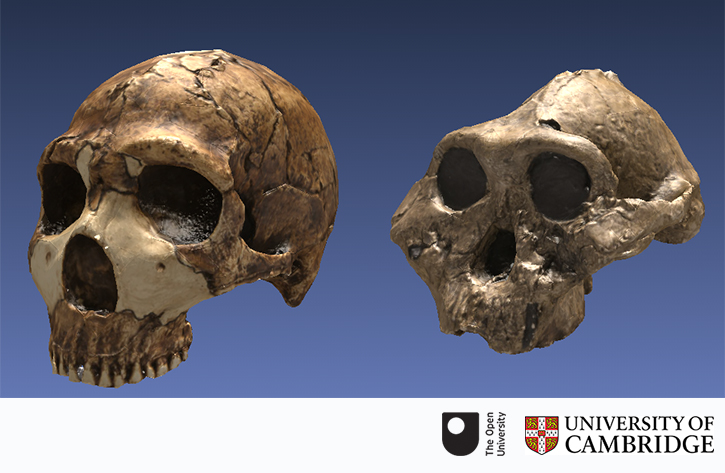Hominid skull evolution

Explore the features of a collection of hominid skulls and take measurements that will enable you to determine the evolutionary relationships between them, investigating the march of bipedalism through the fossil record.
The development of bipedalism (walking on two legs) is considered to be a very critical event in the evolution of hominids. Evolution is a process of gradual change and so it was with the various adaptations of the skeleton required to support the transition to bipedal motion.
Among these adaptations was the gradual movement of the foramen magnum (the hole in the bottom of the skull through which the spinal cord and brain stem connect to each other). This occurred because for a bipedal organism to stand upright and have its eyes facing forwards (rather than upwards) there needs to be an approximate right angle between the spinal cord and the base of the skull. Movement of the foramen magnum towards the centre of the skull enables this angle to be accommodated and provides the joint with sufficient strength and stability.
The position of the foramen magnum on the base of the skull
and the development of the bipedal posture can therefore be used as way of
determining the evolutionary relationships between the various ancestors of Homo sapiens with earlier (i.e. older)
species having a foramen magnum closer to the back of the skull.
You may be interested in the following Open University level 1 modules:
S112 - Science: concepts and practice